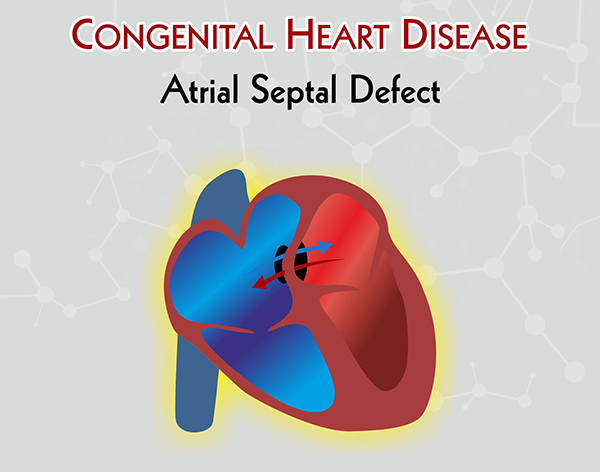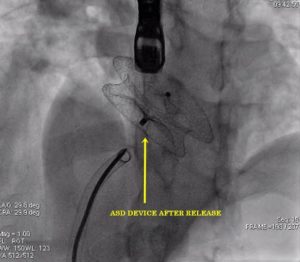Common Cardiac Conditions
- ASD Surgery in Delhi
- VSD Surgery in Children in Delhi
- Best PDA Surgery in Delhi
- Coarctation of Aorta Treatment in Delhi
- Aortic Stenosis Treatment in Delhi
- Pulmonary Stenosis
- Atrio-Ventricular Septal Defect (AVSD/AVCD)
- RSOV Treatment in Delhi
- Eisenmenger Syndrome/ Complex
- Tetralogy of Fallot Treatment
- Transposition of Great Arteries (d-TGA)
- Total anomalous pulmonary venous connection treatment in Delhi
- Truncus Arteriosus
- Tricuspid Atresia
- Double Outlet Ventricle
- Congenitally Corrected Transposition of great vessels in Delhi
- Ebstein’s Anomaly
- Pulmonart Atresia (PA) Without VSD/Intact Septum
- Pulmonart Atresia (PA) with VSD
- Hypoplastic Left Heart Syndrome
- Stenosis of Pulmonary Artery Branches
- Patent Foramen Ovale (PFO)
- AP Window Device Closure
- Vascular Rings
- Interrupted Aortic Arch (IAA)
- Bicuspid Aortic Valve Treatment
- SVT treatment in children
This is a congenital heart disease (CHD), meaning that hole is present at birth.
ASD is a hole in the heart that is situated in the wall (inter-atrial septum) those separates two upper chambers of the heart known as left and right atriums (LA & RA).
Types of Atrial Septal Defect (ASDs)
There are 4 types of atrial septal defect.
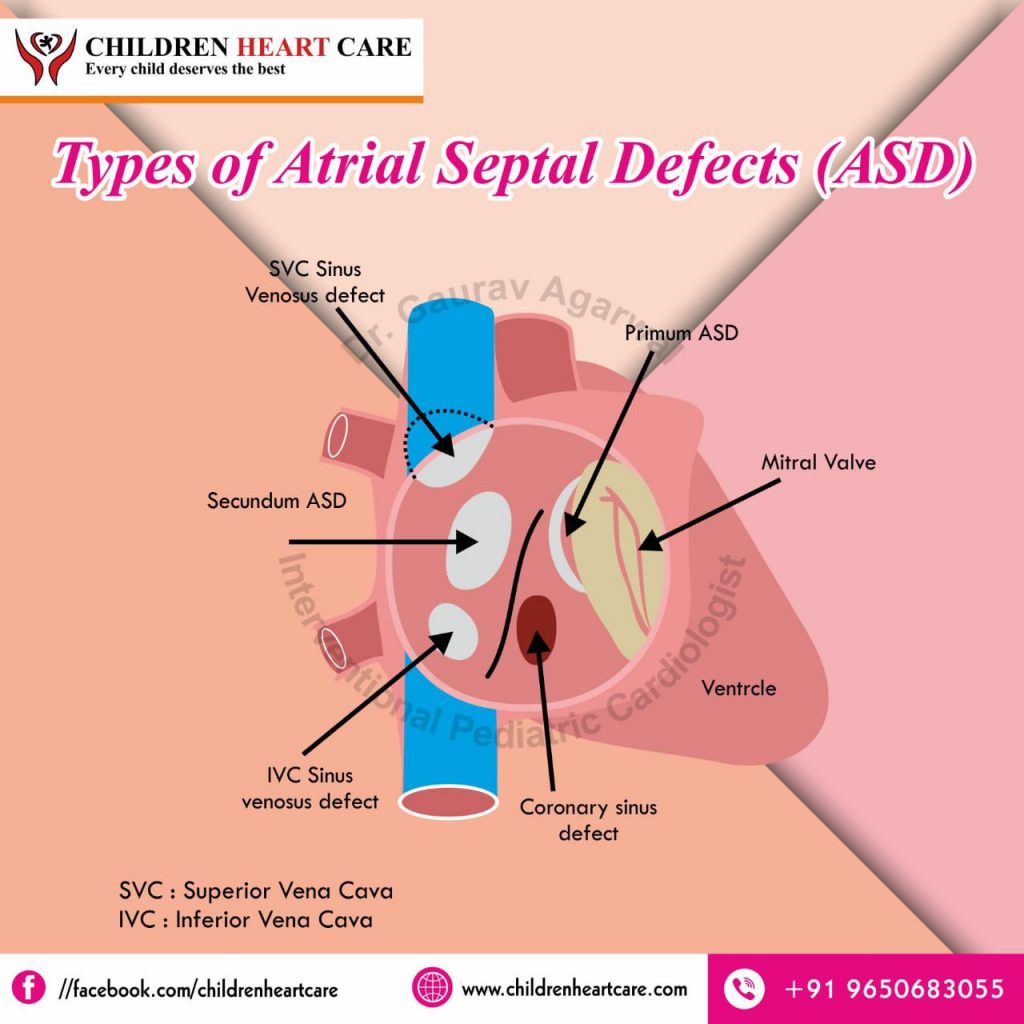
- Ostium Secundum atrial septal defect (OS-ASD): Most common type of ASDs. It is located in the middle of interatrial septum.
- Ostium primum defect: This occurs in the lower part of the inter-atrial septum, and can be associated with mitral valve abnormalities and other CHDs.
- Sinus venosus defect in inter-atrial septum (superior vena cava {SVC} & inferior vena cava {IVC} types): This is a rare defect and occures in the upper or lower parts of the interatrial septum.
- Coronary sinus type of defect of ASD: This is very rare variety.
Atrial septal defect can be small, moderate and large in size.
Most of the small defects (up to 8 mm in size) close spontaneously in 80-85% of the children.
Sizes more than 8 mm generally do not close spontaneously and needs to follow-up at regular intervals.
Large ASD leads to increase flow of blood to right sided heart chambers and to the both lungs. In long standing cases, it can lead to increase in lung pressures, abnormal heart beats etc.
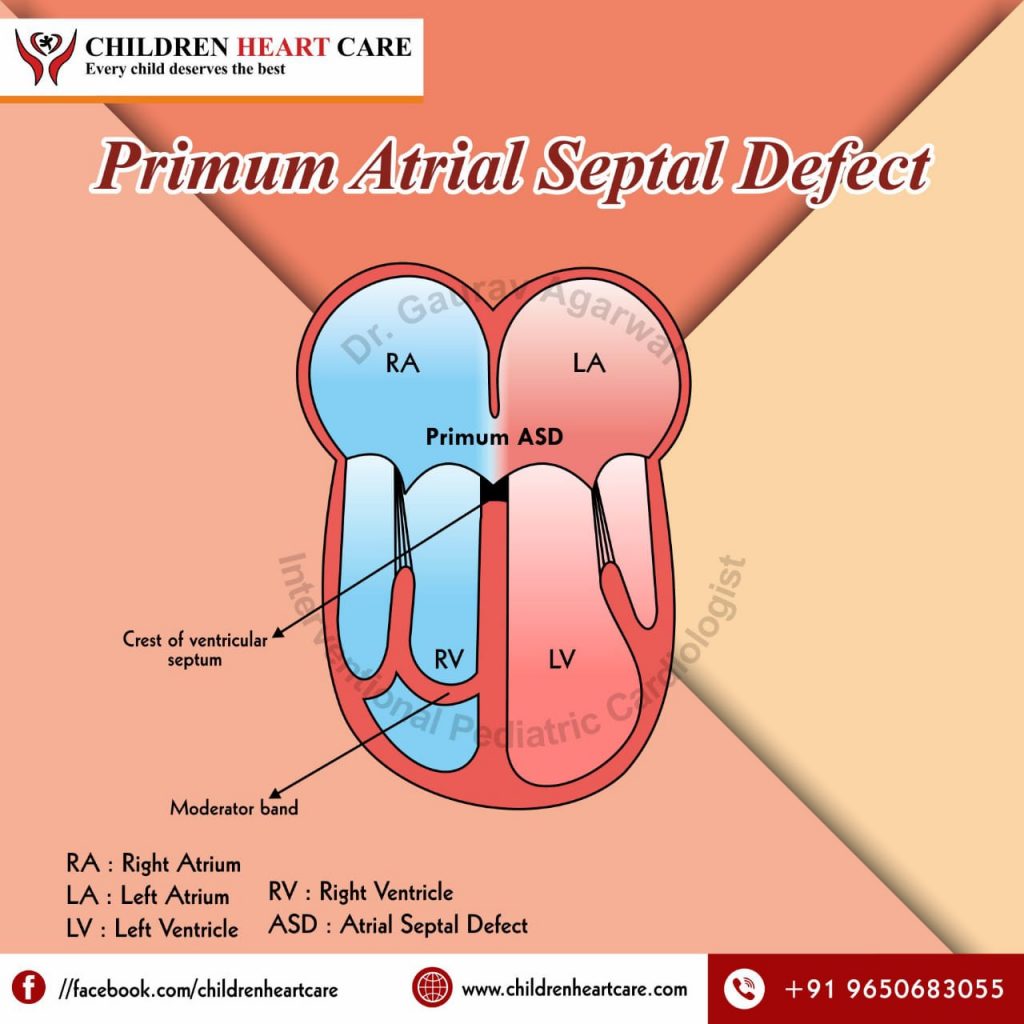
Atrial Septal Defect Symptoms
As most of the children are asymptomatic (having no symptoms), atrial septal defect can be easily missed in early childhood and even in adults.
In adults, symptoms can start around age of 25-30, but it is not always there.
If at all, symptoms are there, it can be:
- Difficulty in breathing on exertion
- East tiredness
- Heart beats abnormalities
- Paradoxical embolism leading to brain strike in late stages if not treated on time
- Cardiac murmur on examination (atrial septal defect murmur)
- Right heart failure leading to swelling all over the body
Diagnosis of Atrial Septal Defect
Atrial septal defect can be suspected clinically by a pediatrician and for confirmation; they will send the child to a pediatric cardiologist for confirming ASD.
Diagnostic modalities for defining ASDs are ECG, chest X-ray but confirmatory test is by doing Paediatric Echocardiogram (Pediatric transthoracic echocardiogram). This is to be done from chest of the child.
It is a non-invasive test and it is not painful to the child. This test generally takes 5-10 minutes for completion.
In some children, adolescents & adults, when transthoracic echocardiogram is not confirmatory due to poor visualization of ASD, we need to do another variety of echocardiography that is known as transesophageal echocardiography (TEE). It needs to be done from the food pipe (esophagus) of the patient.
ECG and chest x rays are for supporting the diagnosis of ASD.
Other modality for diagnosing the ASD is by doing CT or MRI angiograms.
Sometimes, we need to do cardiac catheterization for assessing the pulmonary artery pressures.
Atrial Septal Defect Treatment in Babies
There is no role of medicines in closing the atrial septal defect. Drugs only help in controlling signs of heart failure, ECG abnormalities and rise in lung pressures (PAH).
ASD closure indications and timings
Ostium primum, sinus venosus or coronary sinus type of atrial septal defects:
Procedure of choice is by doing surgery for ASDs.
Only ostium secundum (OS-ASD) with good rims around the defect can be taken up for closure by non-surgical methods. If rims around ASDs are not appropriate then it needs to be closed by surgery only.
Device Closure of Atrial Septal Defect (ASD device closure)/ Transcatheter closure of Atrial Septal Defect
For closing the hole (OS-ASD) in cath lab, we use an umbrella shaped device with the help of wires, catheters under fluoroscopic and echocardiogram guidance in cardiac cath lab. Procedure is generally done under conscious sedation (sometimes in general anesthesia). Patient can be discharged on next day and can perform daily activities without any fear. Within six months, device become endothelized and become a part of heart for life long.
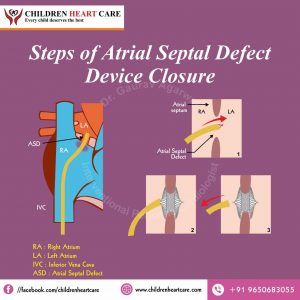
This method of closure of ASDs does not produce scar on the chest. Patient needs to take tab aspirin for 6 months post-procedure.
Ideal age of repair of ASDs
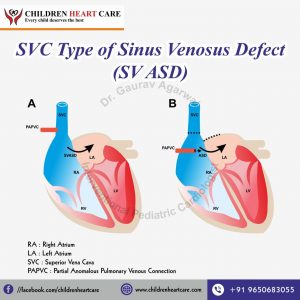
For Primum defect: Between 2-3 years of age and if associated with severe abnormalities of mitral valve then around one year of age.
For sinus venosus defect (SVC/IVC type): around 5 years of age.
For coronary sinus defect: around 2-3 years of age.
Ostium secundum defect (OS-ASD): Between 2-4 years of age.
ASD closure Surgery (Atrial septal defect surgery, ASD closure procedure)
Surgery for OS-ASD can be conducted from mid of sternum (sternotomy) or by minimally invasive cardiac surgery (MICS). MICS to be done in adolescents or adults. (Atrial septal defect repair in Adults).
ASD (Atrail septal defect) closure/surgery cost in reasonable now a day.
Atrial septal defect and pregnancy
As ASD can be easily missed and we have seen many women in the age group of 60-70 years who were unaware of hole in the heart (ASD), these were having children even by operation (LSCS).
So, pregnancy can be easily tolerated with ASDs.
But if women is having complications due to ASD like heart failure, heart beat disorder, increase in lung pressures etc, then pregnancy can be complicated with ASD as well, so better to avoid pregnancy in such situations.
Risks to the off springs
There is an increase risk to the offsprings when mother or father is having some form of CHDs like atrial septal defects as compared to normal population.
Prevention
It is difficult to prevent ASDs. So before planning the pregnancy, family should consult with pediatric cardiologist. This can be in the form of evaluation Rubella, medication history etc.
Follow-up care
It depends on type of defect of ASD, method of closure of it and other associated cardiac anomalies.
Echocardiograms are to be repeated at regular intervals as advised by a pediatric cardiologist.
There should be an aggressive follow-up with adults who either did not undergo repair or repaired as it can leads to heart beat or arrhythmia issues, or pulmonary hypertension related problems.
Want to get ASD Surgery in Delhi ? - Contact Dr. Gaurav Agrawal.
Ostium Secundum ASD in Transesophageal echocardiography
Post ASD device closure on Transesophageal Echocardiography
Ostium Secundum ASD in transthoracic echocardiography
Sinus Venosus Defect: SVC Type in 4 chamber view
Sinus Venosus Defect: SVC Type in subcostal view


